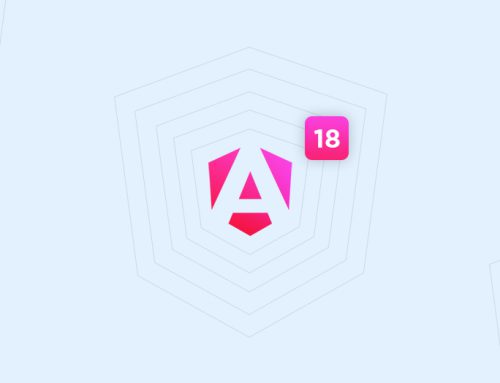Table of Contents
“Choosing the Best is Better.”
This quote holds true for technology as well, such as JavaScript. The expeditious developments in this field are fabricating numerous options for the developers. Hence, it is quite a strenuous task for a developer or for that matter the organization itself to choose the best among all the available JavaScript Frameworks. According to the market trends, the JavaScript Frameworks that are heading the list areVue, React and Angular, discovered by Evan You, Facebook, and Google respectively. And if you have landed on this article then probably you are trying to make a choice among them. As we have already discussed the difference between React and Angular earlier, let’s, extend our discussion even further, as we have another candidate in the queue, called Vue.
Why should you choose Vue instead of React and Angular?
The State of JavaScript Survey predicts that Vue.js is the most popular framework with a 91.2% satisfaction rating. This rating says a lot about the demand for the Vue framework in the market. The best thing about Vue.js is that it is progressively adaptable and less domineering, that is, it allows you to build your application the manner in which you prefer, rather than being compelled to do it in a specific way just as in the case of Angular. Vue shares some similarities and also has some major differences with reference to Angular and React.
React versus VUE versus Angular
-
Simplicity and Ease:
To work on a certain technology, it’s very important for you to absorb it properly and for that it should be simple and easy to understand. And this factor proved to be a perk to Vue as in comparison with Angular and React, it is really easier to learn and understand. In React, you need to be acquainted with JSX(Extention of JavaScript ) along with HTML and basic JavaScript, which is a bit harder as JSX is a new concept for you.
For Angular, you need to go through the entire framework first and also you need to brush up a few other concepts related to it as well. Whereas, in the case of Vue, knowledge of HTML and basic JavaScript is sufficient to work on it, which are comparatively easier and familiar topics. So, we can conclude that Vue is the simplest technology among the three.
Coder’s Digest:
JSX: const var=<H1> This is an example of JSX</H1>;
-
Data Binding:
Data Binding means binding of data between two components which is somewhat concerned with the synchronization of data. In context to the MVC, this binding is done between the model and view components. There are two methods of Data Binding- One-way Data Binding and Two-way Data Binding. Angular supports Two-way Data Binding in which both parent and child(model and view in case of MVC) can update each other’s data. React supports Unidirectional Data Binding, in which data flow is only in one direction. Vue supports both of these techniques, that is, Two-way as well as One-way, which once again clearly makes it a winner.
Coder’s Digest:
For one-way Data Binding in Vue:
<template>
<input value=”variable” />
</template>For two-way Data Binding in Vue:
<template>
<input v-model=”variable” />
</template> -
Re-Rendering:
Re-rendering means Rendering (or in simpler terms transforming the component in DOM Code which is understandable to the browser) again and again whenever any change in the state of the system is observed. In the context of React, whenever the re-render process is triggered, it covers the entire subtree, starting from the component where the change was made, in spite of that specific node where the change was performed and hence takes more time comparatively.
In Vue, the system automatically tracks that particular component where re-rendering is required rather than checking the entire subtree, which not only reduces the complexity but also requires less time. Well, Angular is nowhere in this race as it does not use render function separately rather it performs rendering and checking during data binding instead, which in turn results in “dirty checking”. Hence, once again Vue has managed to leave its mark in the race and win it.
Coder’s Digest
The command for Rendering and Component Update: “shouldComponentUpdate” In React this command had to be implemented manually whereas Vue implements this automatically, making it a better choice.
-
Coding add-on:
Unlike Angular and React, Vue, along with some considerably highly advanced functions, also facilitates the users with few basic templates to work upon, which is an add-on to the existing features. The advantages of the presence of the templates are higher productivity, easy adaptability and easier migration of pre-existing applications.
-
Flexibility:
Being second in this list, yet Vue is the best. You might be wondering how even this is possible. Well, Vue has made this happen as Vue is slightly less flexible than React but more flexible than Angular. Angular is quite inflexible as in this you are supposed to follow the protocols and work according to it.
React, on the contrary, is highly flexible because it allows the user to select their own way which is sometimes really helpful. However, few things are somewhat challenging, let’s say for routing, React internally does not provide the routers, hence for routers you need to contact a third-party. And if you are a newcomer it may be a bit mind-boggling for you. Vue is also considered flexible, but it does not leave the users open-ended for routing purpose as it provides Vue Routers for it, which makes it easier for the beginners as they need not search for the external providers immediately -
Lightweight
If you are thinking to opt for a lightweight solution with the features of Angular and React to build your application, you can undoubtedly go for Vue as it just takes approximately 20 to 30 kb space, whereas React takes approximately 43kb and Angular takes more than 100 kb of space according to Github . Hence, Vue is the lightest among all three.
Conclusion
These were the prime factors as well as the pillars on which you base your decision while choosing a particular technology or framework for your project. However, it is a quiet brainstorming situation for a programmer to make a choice between Vue, React and Angular as they are very close competitors. Our Ace team understands this as we ourselves handle various projects and services including the JavaScripts as well and hence trying to offer a helping hand through this article. Hopefully, by now, you might have been able to make your mind on the framework you want to opt for your project.

























Leave A Comment